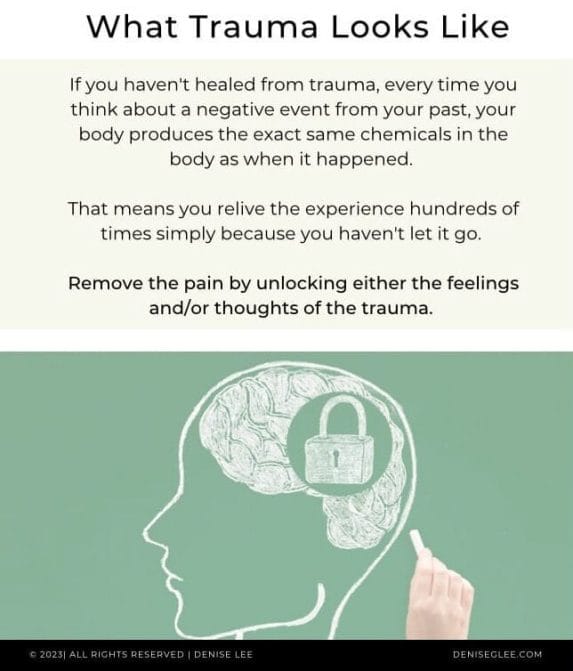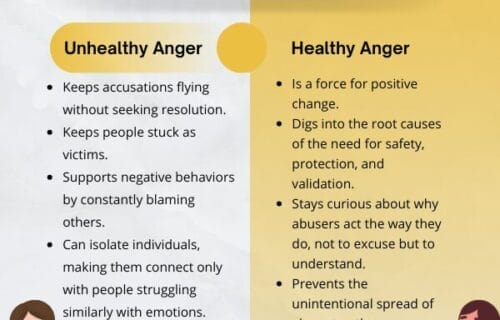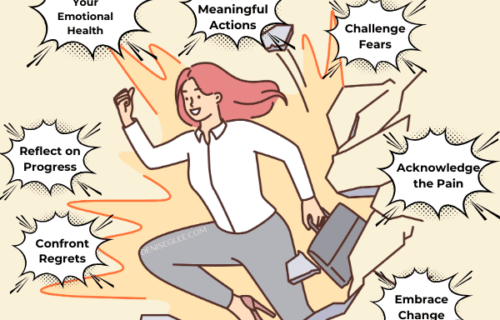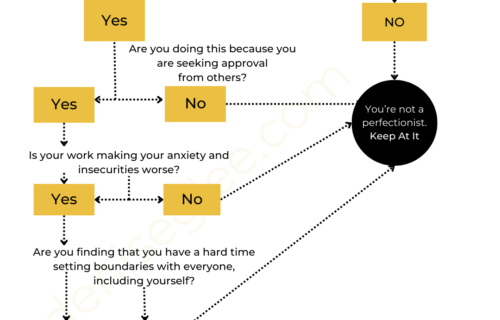
What to Do If You’re Having a Panic Attack: Effective Strategies for Immediate Relief
Ever felt like you just can’t catch your breath? It happens to all of us. Sometimes, anxiety takes over, and it feels like there’s no way to calm down or control those overwhelming feelings. As a life coach for business owners, I understand how crucial it is for my clients to stay calm in the middle of chaos, rather than becoming a storm of emotions.
This article isn’t here to just say “calm down” because, honestly, it’s not always easy to control that instant reaction. Instead, I want to give you practical tools—real things you can do—to help you get through those scary moments of fear and panic, providing strategies that bring immediate relief.
The Struggle is Real: Understanding Panic Attacks
Wow! This is a big deal for a lot of us. Especially for us who had emotionally disabled parents.
Think about those times when it feels like everything is closing in, and your heart is beating so fast it might burst out of your chest.
Your hands get sweaty or cold, and you feel like a stranger in your own body. It’s like your whole world is about to fall apart, and you have no idea how to fix it.
Real Stories, Real Hard Times
I was talking to someone recently, and she told me about having panic attacks at the grocery store. Yes, the grocery store! Imagine needing a secret signal to let your family know you’re struggling with a sudden panic attack in the fruit and veggie aisle. That’s a real challenge for many people dealing with panic attacks.
My Own Struggle
When my anxiety was at its worst, even having only 3-4 panic attacks a week felt like a big win. It was not uncommon for me to wake up feeling afraid and dreading going to sleep because I knew I would struggle with insomnia, ruminating on all the mistakes I had made during the day.
Being an addict can put you in some potentially dangerous situations. I know it’s tough, but I want to offer encouragement by sharing how recovery can help. In the next part, we’ll talk about why some people are more easily affected by stress.
You're not experiencing panic solely due to the current situation. Instead, your response is linked to accumulated unresolved pain and stress from the past, triggered by something as basic as a sight, sound, or smell. Always trust your body's capability to defend and protect you.
Denise G. Lee Tweet
Why do some people get stressed while others feel overwhelmed, scared, or angry?
When we have panic attacks, it’s like our brains reacting to stress. How we react depends on things like:
- our experiences,
- how well we handle stress,
- our personality, including our temperament,
- and how we cope (stress management) with things.
Think about it this way: picture a car crash, and different people see it from different distances. Someone who’s a paramedic, firefighter, or doctor might be up close attending to the crisis, while some bystanders see it from far away.
Now, let’s say one of these bystanders is a young person who recently survived a really bad car crash, and another bystander is older and has seen a lot of crashes before. Each person sees the situation differently based on their experiences and past traumas.
The young person may be much more deeply affected by the accident, even though he was neither close to the scene of the crash nor knew the people involved. But his body knows.
When something bad happens to us, our body remembers it to protect us from getting hurt again. However, sometimes our brain doesn’t realize that we are safe now and thinks we are still in danger.
Next, we will talk about the main parts of your brain and how it adapts to stressful situations.

Our brain is built for survival
The four parts of our brain
- The Neo or pre-frontal cortex – for thinking and reasoning.
- Limbic system – for emotions and bonding.
- Diencephalon – for arousal, sleep, appetite, and movement.
- Brainstem – (aka basal ganglia or brainstem) – designed to control basic survival functions like breathing and heart rate.
And during this times of crisis or stress, the different parts of their brain react, which can either keep them calm or make them go through a full-blown panic attack. Each part helps us stay calm, alert, alarmed, or in fear. Dr. Bruce Perry, a psychiatric and trauma expert, explains this idea well through the stage of CALM, ALERT, FEAR and TERROR.
Calm
When we’re CALM, our cortex is in charge, and we can think clearly. If things aren’t fixed, we may feel tense, moving into ALERT. In this state, our cortex is still working, but our emotional limbic system is active. We become hyper-vigilant, and our senses might get stronger.
Alarm
When we don’t calm down, we enter ALARM, going into a freeze response. This is when we might dissociate, feeling like our mind is somewhere else. If forced to act, we might go into fawning, doing anything to get away from the threat.
Fear
If these strategies fail, we move into FEAR. We might dissociate, feeling reactive and unable to think clearly.
Remember the movie Willy Wonka and the Chocolate Factory. Do you remember the lines Wonka, played by Gene Wilder said about the weird twists and turns that awaited them as the went through the tunnel? Fear is real when you don’t know what to expect next.
Panic
The panic is real. You feel like you are in an outer world where people and things don’t make sense. The last stage is terror, where your brain is fully activated, and you might fight, faint, or collapse. Panic attacks happen between alarm and fear, where you might comply, freeze, or panic without understanding what’s happening. Regardless, you will likely feel bad about your actions later.
In the next section, we will discuss some tools to help if you are in the middle of a panic attack.
While we can't avoid all stressful events, we possess tools to protect ourselves today. We're no longer helpless, and we can help ourselves even in the midst of chaos, confusion, or uncertainty.
Denise G. Lee Tweet
What to Do If You’re Having a Panic Attack
When a panic attack hits, logic and reason might feel totally out of reach. What you can and should do is focus on calming your nervous system down from fear and alarm back to calm or just alert. This helps you avoid suddenly leaving meetings or saying things you might regret later—things that can mess up our lives when overwhelming panic takes over.
Here are some tips that will help you.
Tip 1: Carry a Fidget Tool
Have something like a watch, ring, bracelet, or necklace that you can hold onto when fear and anxiety strike. Holding onto it helps keep you in the present moment instead of worrying about the future.
Tip 2: Smile!
Even though it might be the last thing you feel like doing, studies show that smiling can push back against anxiety. It helps your brain’s pre-frontal cortex “wake up” and see what you can do in the present moment.
Tip 3: Count, Observe, Move
Count from 1-100 or 100-1, say the alphabet, or count the tiles on the floor. Take notice of what’s around you—sights, smells, and sounds. Change your position; stand up if you’re sitting or sit down if you’re standing.
Do something completely different from what you’re doing right now. When your emotional brain and survival brain are active, they want you to focus on pain and discomfort. Don’t let them! Shift your mind to something completely unrelated.
The image below summarizes my thoughts.
Remember, most of the work to manage panic attacks starts well before they happen. In the next section, we will talk about how to prevent panic attacks.

How to Stop Panic Attacks Before They Happen
I really wish I could magically make panic attacks disappear for you, but it’s not that simple. Some people are more prone to panic attacks due to their personality, upbringing, life experiences, or other reasons.
Think of it like folding a piece of paper into a square. Imagine you have two pieces of paper. One already has creases because it was shaped into a box before, while the other is a plain, unused sheet. The paper with creases is easier to turn into a box, just like how your mind might find it easier to go from calm to panic if you’ve been through trauma or lack coping skills. But don’t worry, you can change that with the right skills.
Tools to regulate your body
Preventing panic attacks is better than dealing with them later. Here are some tools that can help:
- Cognitive-Based Therapy,
- Eye Movement Processing and Desensitization,
- Transcranial Magnetic Stimulation,
- Art Therapy,
- Somatic work like yoga and breath exercises, or even equine therapy.
These methods can help calm your body down, making you less prone to panic attacks. In addition, here are some other self care tips which will help you.
As a trauma-informed coach, my job is to teach you how to keep your mind from panicking. I guide my clients to break the habit of making things seem worse, labeling, and putting unnecessary pressure on themselves. The key is to let things be without freezing or getting angry. In the next part, I’ll share my final thoughts on this issue.
Final thoughts
As you start your recovery journey, know that you’re not alone. The tools and tips we’ve talked about aren’t just ideas—they’re real, practical, and ready for you to use. To begin easing panic attacks, first, recognize that your feelings are real, they are valid, but they don’t have to overwhelm you.
If you need support, feel free to reach out to me. Additionally, I’ve got a podcast episode that might offer more help, and you can find it here or press the play button below.





